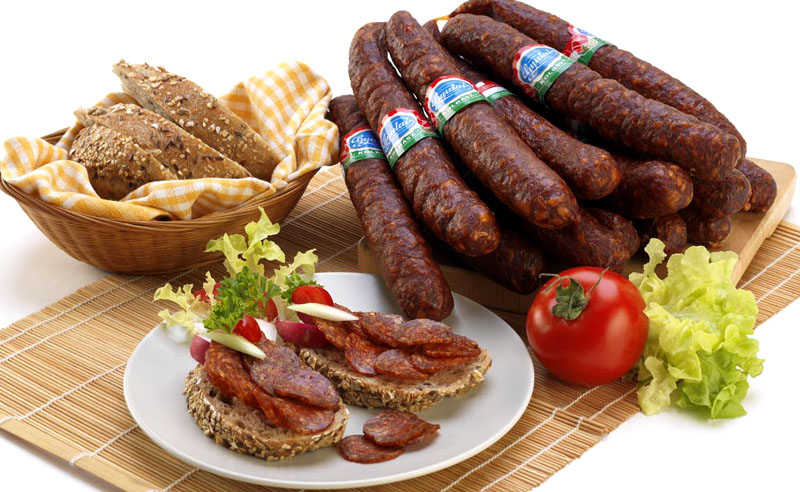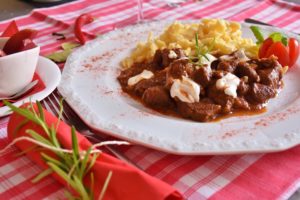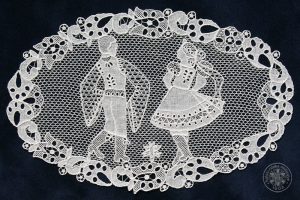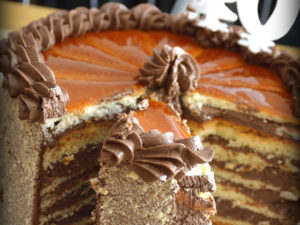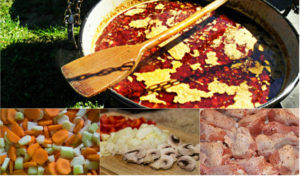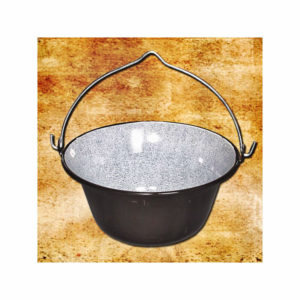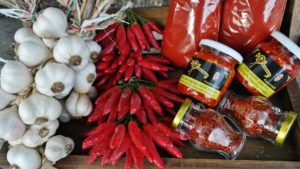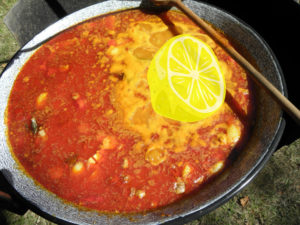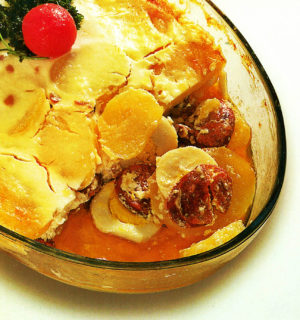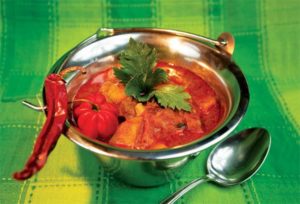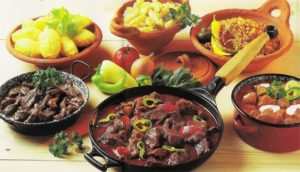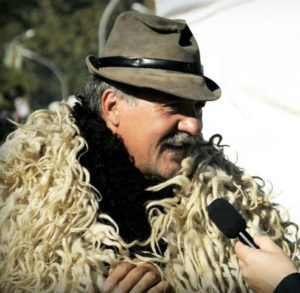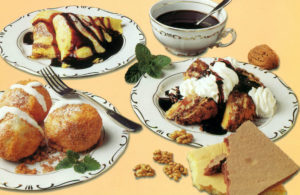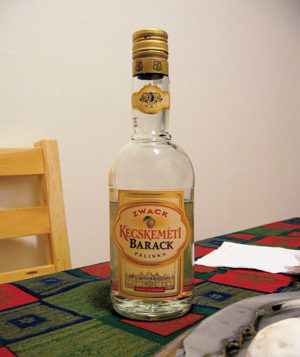The land of milk and honey – and Hungarian sausages: Gyulaer and Csabaer
Hungarian sausages are among the most delicious products that are made from fattened pigs. A Hungarian fairy tale tells how a good fairy granted a poor boy three wishes. His first, which involved no hesitation on his part, was for a plate of sausages. And small children are told how the land of milk and honey has fences made of sausages – still a symbol of wealth in Hungary today.
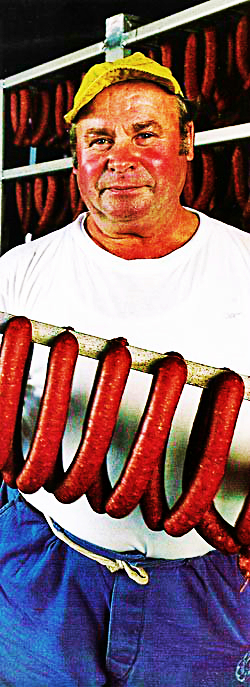
Sausage “a la maison” simply contains a few basic spices, such as salt, paprika, pepper, and garlic. Cumin sausage contains cumin, pepper, and lemon rind. Another extremely popular variety is marked by the penetrating aroma of garlic, and in yet another, it is the smell of pepper. Smoked lemon sausage is seasoned with pepper and ground cumin, as well as lemon juice and grated lemon rind.
The best-known Hungarian unsmoked sausages come from Békécsaba and Gyula in the south of the Great Plain, and are known simply as Csabaer and Gyulaer. Cattle-breeding has flourished in this region since the early Middle Ages, and vast cattle markets were staged under the protection of Gyula castle and attended by dealers from as far away as Munich, Dresden, Nuremberg, and Vienna. Whole butcher dynasties grew up in this traditional meat center, who were constantly dreaming up new products to tempt their customers.
Hungary’s first abattoir was also opened here, in 1868. At the beginning of the 20th century, when improved traffic conditions meant better sales opportunities, countless small meat-processing businesses sprang up like mushrooms, including the meat factory of András Stéberl.
This master butcher was so proud of his meat products that he boldly decided to exhibit them at the 1935 World Exhibition in Brussels. His bravery paid off, since his products received the highest recognition: the gold medal. The company was nationalized in 1948, and Stéberl sausage became known as Gyulai kolbász — Gyulaer hard-smoked sausage.
This sausage is still as popular as ever, although it now contains beef as well as pork, which, for the tradition-conscious Hungarian, should be the only type of meat allowed in a sausage. The secret of its success is moderation in the seasoning; although Gyulaer is piquant, it will not upset a sensitive stomach.
A careful balance of selected spices, such as the best quality Hungarian paprika, pepper, cumin, and garlic, and above all else, very finely chopped Hungarian bacon, combine to produce the unmistakable aroma. The smoking process adds the final touch to a perfect flavor.
Photo – gyulahus.hu



